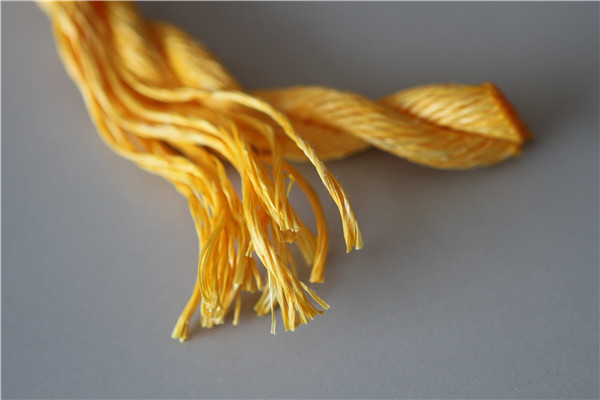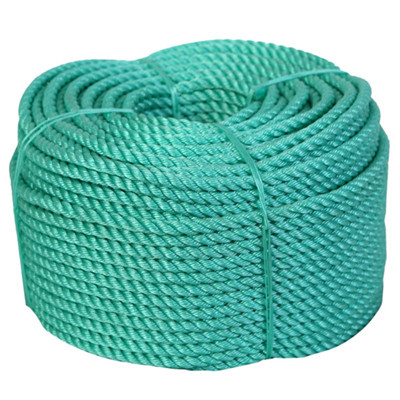From the fiber raw materials to the final manufacture of finished fabrics, it needs to go through spinning, weaving, printing and dyeing and other projects, and in each project, it needs to go through a continuous multiple processing processes (Process) to complete.
In various levels of processing, improper setting conditions, negligence of personnel operations, mechanical failures, etc., may cause defects in the appearance of the product. In theory, the more layers of processing, the higher the probability of defects.
Such shortcomings that can be seen in the appearance of fabrics are called fabric defects. However, there are also no abnormalities in the state of the embryonic cloth, which will appear remarkably after bleaching and dyeing. This kind of general is called latent defect or hidden defect.
There is a saying in our country: "Make more and more mistakes, less and less mistakes, not good." Although this term is out of date in the spirit of modern work, it is very practical to use in the flaws caused by the multi-level processing of textiles.
There are few perfect things in the world. The spinning process will cause defects in the original yarn, such as cotton (Nep), thick knot (Slub), etc .; the weaving process will cause defects in the fabric, such as weft (Mispicks), warp (Broken Ends), etc .; printing and dyeing will cause defects in the finished cloth, such as Dye Spot, Tailing or Ending, etc. The quality of finished fabrics should have very few defects.
If there are many defects in a certain finished fabric, whether it is used for making clothes, quilts, or other daily necessities and decorations, it will affect its beauty and reduce its value.
2. The appearance characteristics and causes of fabric defects
From fiber to finished fabric, the processing stages can be divided into four stages: spinning, weaving, scouring, dyeing, printing (Scouring & Bleaching, Dyeing, Printing) and finishing (Finishing).
Now the defects that may occur in each stage, using the general name of the factory, are described below in terms of their appearance characteristics and the reasons for their generation:
1. Belong to the fiber raw material and yarn count
2. Belonging to the reason of weaving
3. Belong to the reason of printing and finishing
4. Producers who are difficult to belong to and professional processors
1. Belong to the fiber raw material and yarn count
(1) Nep (2) Cotton Seed Skin (Seeds)
(3) Slub (4) Flyer
(5) Cockled Yarn (6) Uneven Yarn
(7) Cloudd of Weaaving (8) Fiber Spot
(9) Different Iots (10) Bad steaming
(11) White spot
(1) Cotton (Nep)
Appearance: The cloth surface is similar to the size of the cotton fiber, and it is spun into the yarn. If you pull it off, the yarn will break or will break. Rovings woven from low-grade raw cotton often have such defects.
Causes:
1. There are dead cotton fiber clusters in the raw cotton, which were not completely removed during the flower cleaning process.
2. The needles of the cylinder or the needle board are not sharp enough during carding, or the gap between the two is not set properly, and the carding function cannot be fully exerted.
(2) Seeds
Appearance: The surface of the embryonic fabric of pure cotton or cotton fiber blended with very small black or dark non-fibre fiber fragments.
Causes:
1. Ginning process When the cotton fiber is separated from the cotton seed, the root of the fiber has cotton seed skin, or the cotton seed is crushed and admixed with the raw cotton.
2. The process of flower cleaning failed to completely remove the cottonseed skin.
(3) Thick knot (Slub)
Appearance: On the warp or weft of the fabric, there are occasionally a small length of 5 to 20mm thicker than the normal diameter of the yarn, and the number of twisted fibers is less than the normal twist.
Causes:
1. In the roving fed during worsted spinning, the density within the fiber is uneven, and there are smaller dense shuttle fiber bundles.
2. The top rollers and aprons of the spinning machine cannot hold the roving uniformly.
(4) Flyer
Appearance: It is similar to thick knot, but it is thicker, not as slender as thick knot, and the fiber is clumpy. The yarn is slightly untwisted so as not to break the yarn.
Causes:
The fiber mass floating in the air in the spinning room, or the fiber mass accumulated on the nearby table fed by the machine and wound on the yarn.
(5) Cockled Yarn
Appearance: In a section of yarn about the width and length of the fiber, there are large thick knots at intervals. The thickness of the yarn changes like a slub. It is generally more common in the weft yarn of the roving fabric, so it is also known as slub weft.
Causes:
The draft roller of the spinning machine is set to be tight, the roller cover is too loose, and the roving fed in has occasionally fibers of different lengths.
6) Uneven yarn
Appearance: Observed from the long side of the fabric, the woven yarn has uneven thickness. Generally occurs in weft yarn.
Causes:
The yarn spun on the spinning machine is due to the failure of the drafting mechanism or poor performance, resulting in the yarn spun in a period of time, sometimes slightly thicker and slightly thinner.
(7) Cloud weave (Cloudd of Weaaving)
Appearance: The count of weft yarns is significantly uneven. The thicker or thinner are exactly arranged together when weaving to form a sheet. The appearance of the cloth is like a piece of cloud, so it is called Yunzhi.
Causes:
The weft yarns have regular irregularities, and the weft yarns are arranged to be thicker or thinner when weaving.
(8) Fiber Spot (Fiber Spot)
Appearance: dyed fabrics, with a small amount of fibers in the fabric surface that are not colored, or lightly colored, but appear white.
Causes:
1. There are dead cotton fibers in cotton fibers.
2. During the spinning process, due to negligence or improper control, a very small amount of polyester fiber is mixed. When dyeing without using disperse dyes and non-high temperature dyeing, the polyester fiber will not be colored.
(9) Different Iots
Appearance: chemical fiber yarn or chemical fiber processing silk fabric, blended yarn fabric, the count and thickness of the yarn are in accordance with the regulations, but after dyeing, there are distinct boundaries between the warp yarns or the weft yarns in different color shades.
Causes:
1. Although the same silk is used in weaving, the manufacturing lot number is different. Due to different color absorption, or inconsistency in stretchability and bulkiness, after dyeing, there is a difference in color depth?
2. Although the count and density of the blended yarn used in weaving meet the regulations, the blending rate of the fibers in the yarn is different, and there is a difference in color depth after dyeing.
(10) Poor steamed yarn:
Appearance: A scrambled E / C blended fabric, after desizing, scouring, and bleaching, the width of the fabric varies with width and width.
Causes:
After the spun yarn is dropped into the spun yarn, it needs to be steamed with high-pressure saturated steam in a closed container to stabilize the physical properties of the yarn. If the temperature or time of the steamed yarn is insufficient, and the yarn cannot be shaped, after the steaming and scouring, the fabric surface will be tight and loose for a while.
11) White point:
Appearance: The dyed fabrics have uncolored fiber masses on the surface of the fabric, especially those with medium and dark colors.
Causes:
It mostly occurs in the middle and lower grade cotton dyed cloth. The cotton particles formed by the dead cotton fiber in the yarn cannot be removed when scouring and mercerizing. When dyeing, this kind of dead cotton fiber has poor colorability, so it is difficult to dye and show white spots. Recently, the fabrics woven by pure cotton starting spinning under 20Ne often occur during dyeing.
2 belong to the reason of weaving
(1) Wrong Yarn (2) Wrong End
(3) Wrong Pick (4) Wrong Weaving
(5) Wrong Draw (6) and Mispick
(7) Set Mark, Fine (8) Set Mark, Coarse
(9) Pick-Out Mark (10) Broken End
(11) Broken Pick (12) Hundred feet (lack of weft)
(13) Warp Shrink (End Snarl) (14) Weft Shrink (Filling Snarl)
(15) Reed Mark (16) Temple Mark
(17) Shuttle (18) Square Eye (Reedness)
(19) Yarn Tail (20) Joint (Knot)
(21) Float (22) Cobweb
(23) Weaving Hole (24) Slack End
(25) Slack Filing (26) Tight End
(27) tight filling (Titht Filling) (28) fissure
(29) Root repair (30) Teariness
(31) Broken Seelvage (32) Tight Selvage
(33) Slack Selvage (34) Saw Selvage
(35) Uneven warp (36) Missing needle
(37) Yarn matching error (38) Starch Lump
(39) Mildew
Product Features
The best attributes of 3 strands PP danline Twist Rope are top load bearing ability and very high resistance to ultra-violet. Quality checks are rigid and helps in ensuring a rope, which is perfectly balanced, highly flexible and longest wearing type.
Good resistance to oil and most chemicals, float and not absorb water.
Product Applications
Polypropylene danline successfully found their applications in the marine transport,the cargo handing,the fishery,the agriculture and construction.
|
ITEM NO. |
DIAMETER |
LENGTH |
BREAKING LOAD |
|
200040 |
3/16" |
600' |
730 lbs |
|
200041 |
3/16" |
1200' |
730 lbs |
|
200042 |
1/4" |
600' |
1260 lbs |
|
200043 |
1/4" |
1200' |
1260 lbs |
|
200044 |
5/16" |
600' |
1915 lbs |
|
200045 |
5/16" |
1200' |
1915 lbs |
|
200046 |
3/8" |
600' |
2720 lbs |
|
200047 |
3/8" |
1200' |
2720 lbs |
|
200048 |
1/2" |
600' |
4235 lbs |
|
200049 |
1/2" |
1200' |
4235 lbs |
|
200050 |
5/8" |
600' |
6250 lbs |
|
200051 |
3/4" |
600' |
8570 lbs |
|
200052 |
7/8" |
600' |
11600 lbs |
|
200053 |
1" |
600' |
14400 lbs |
|
200054 |
1-1/8" |
600' |
17900 lbs |
|
200055 |
1-1/4" |
600' |
21700 lbs |
|
200056 |
1-1/2" |
600' |
30600 lbs |
|
200057 |
1-3/4" |
600' |
41300 lbs |
|
200058 |
2" |
600' |
52400 lbs |
|
200059 |
2-1/4" |
600' |
66500 lbs |
|
200060 |
2-1/2" |
600' |
80600 lbs |


FAQ:
Q: How about payment terms?
A: 30% TT deposit + 70% TT against the B/L copy within 3 days.
Q.:What about the lead time?
A: We need 3-7 days to get the samples ready, for bulk goods, it will cost 15-60days,up to the quantity.
PP Danline Twist Rope
PP Danline Twist Rope,PP Danline Rope,3 Strand Polypropylene Rope
ROPENET GROUP CO.,LTD , https://www.cnparacord.com